#Mathilde in Bavaria
Text
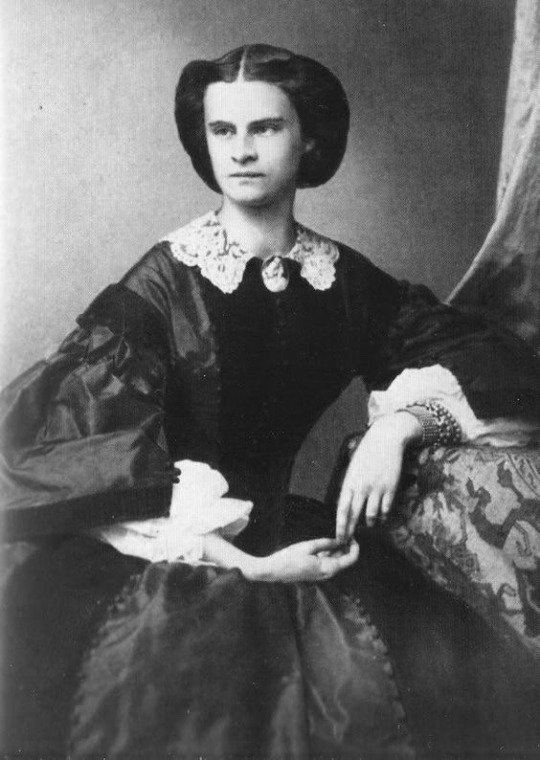
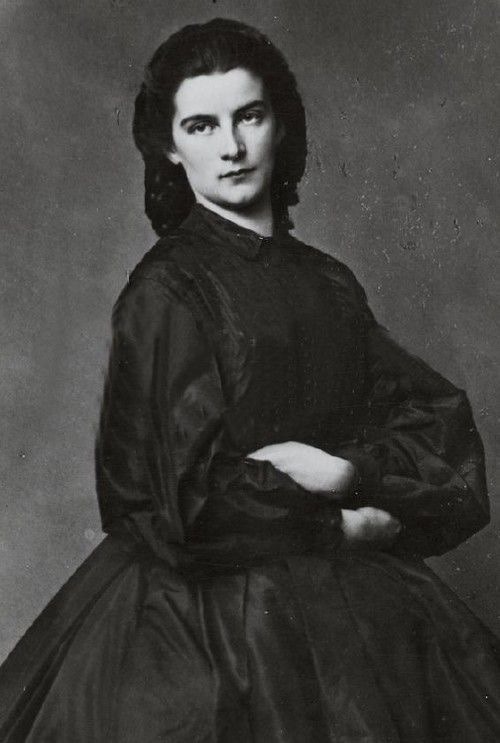
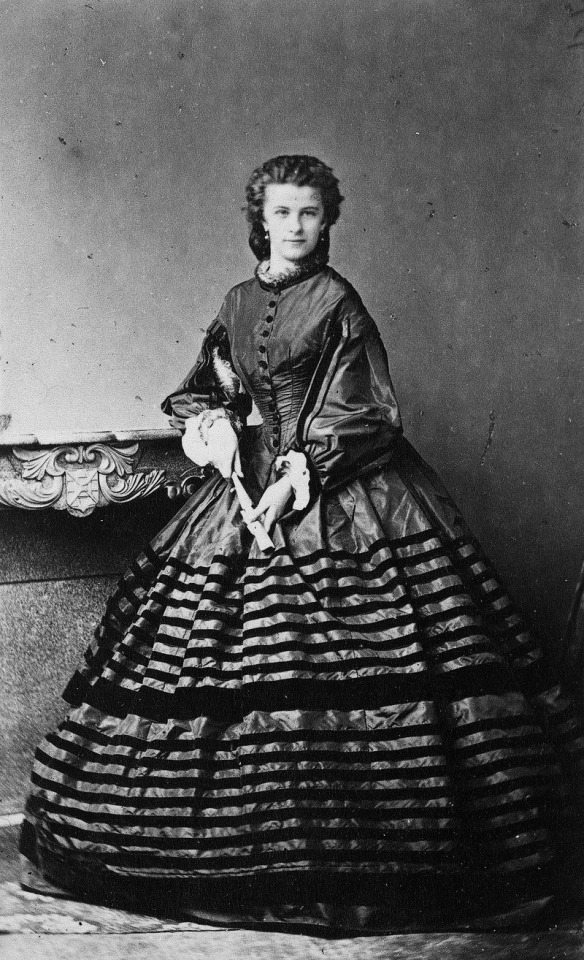

The four sisters of Elisabeth (left to right) :
Helene Caroline Therese, Duchess in Bavaria then Hereditary Princess of Thurn and Taxis. (1834-1890)
Marie Sophie Amélie, Duchess in Bavaria, Duchess of Calabre then Queen Consort of the Two-Sicilies. (1841-1925)
Mathilde Ludovika, Countess of Trani. (1843-1925)
Sophie Charlotte Auguste, Duchess in Bavaria then Duchess of Alençon. (1847-1897)
#Marie-Sophie in Bavaria#Helene in Bavaria#Mathilde in Bavaria#Sophie-Charlotte in Bavaria#old photographs#portraits#sisters#sisterhood
3 notes
·
View notes
Text
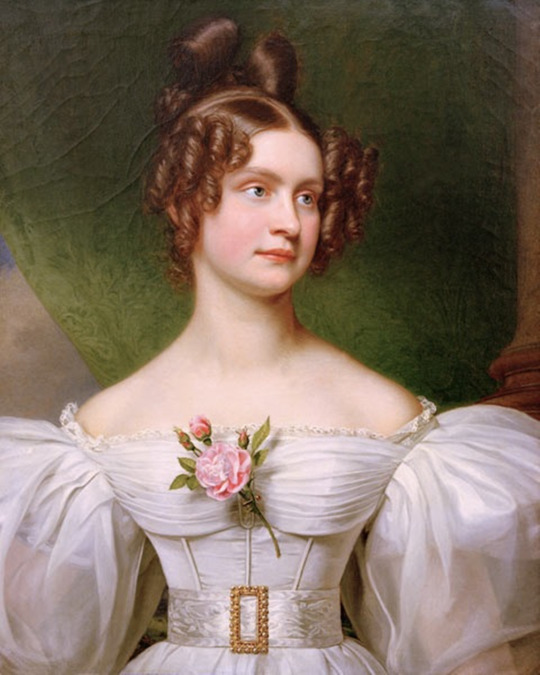

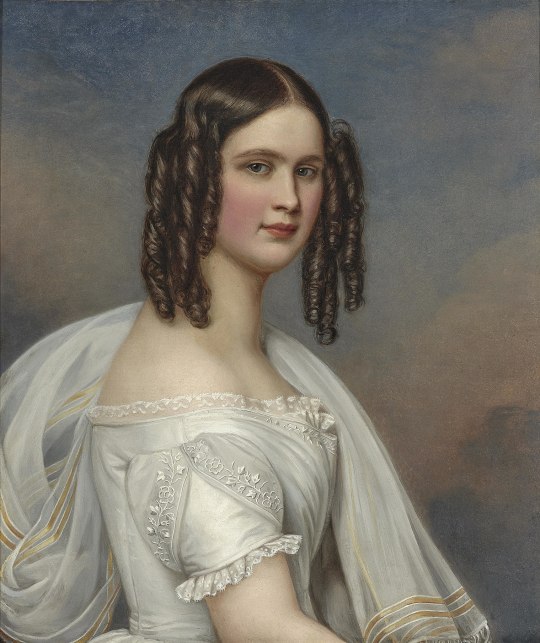
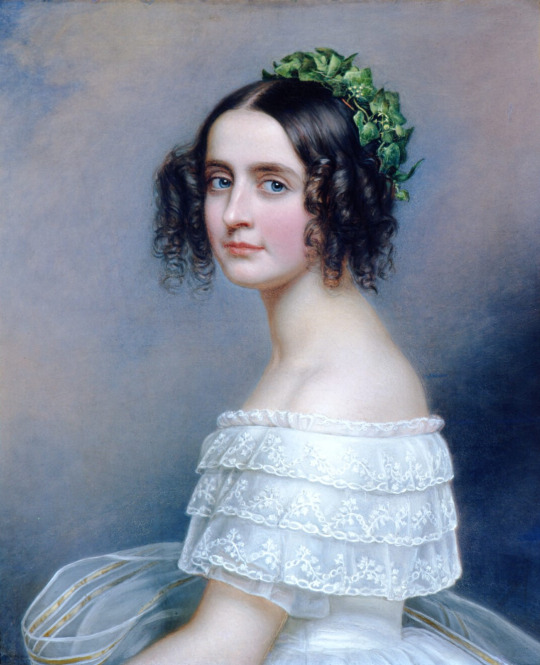
The daughters of King Ludwig I of Bavaria, by Joseph Karl Stieler. Mathilde, Adelgunde, Hildegard and Alexandra.
#mathilde caroline of bavaria grand duchess of hesse and by rhine#adelgunde of bavaria duchess of modena#hildegard of bavaria archduchess of austria teschen#princess alexandra of bavaria#artist: joseph karl stieler#house of wittelsbach
58 notes
·
View notes
Photo

Princess Mathilde of Bavaria, 1898.
#Princess Mathilde of Bavaria#house of wittelsbach#wittelsbach#german royalty#German royal family#german royals#1898#1890s#victorian#colored photography#colored#b&w picture coloring#bavarian royal family#1890s fashion
213 notes
·
View notes
Text

Beautiful Princess Mathilde of Bavaria (Princess Ludwig of Saxe-Coburg and Gotha) and her baby son Prince Antonius in 1901.
#princess mathilde of bavaria#princess ludwig of saxe-coburg and gotha#prince antonius of saxe-coburg and gotha#saxe-coburg and gotha#german royalty#german royal#1901#1900s
81 notes
·
View notes
Photo
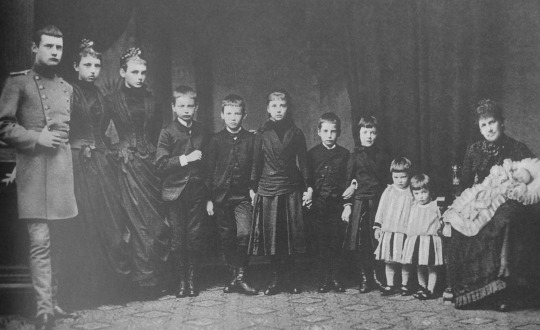
Maria Theresa of Austria-Este , Queen of Bavaria with 11 of her children: From left: Crown Prince Rupprecht, Princess Adelgunde, Princess Marie, Prince Karl, Prince Franz, Princess Mathilde, Prince Wolfgang, Princess Hildegard, Princess Wiltrud, Princess Helmtrud and Queen Maria Theresa with Princess Dietlinde in her lap
Dietlinde died at age one and one more princess, Gundelinde, was born after her death. Another daughter, Notburga, was born between Hildegard and Wiltrud, but only lived for five days.
#Maria Theresa of Austria-Este#house of wittelsbach#crown prince Rupprecht#Adelgunde of Bavaria#marie of Bavaria#mathilde of Bavaria#hildegarde of Bavaria#wiltrud of Bavaria#helmtrud of Bavaria#dietlinde of Bavaria#prince karl#prince franz#prince wolfgang#long live the queue
26 notes
·
View notes
Note
🍄: which royal would you go on a date with
I would go with Lady Diana Spencer for sure 100%✨
i already answered this question but i can gladly answer it again because i am in love with like all of the royal women!
Princess Charlotte of Prussia

2. Queen Alexandra of Great Britain
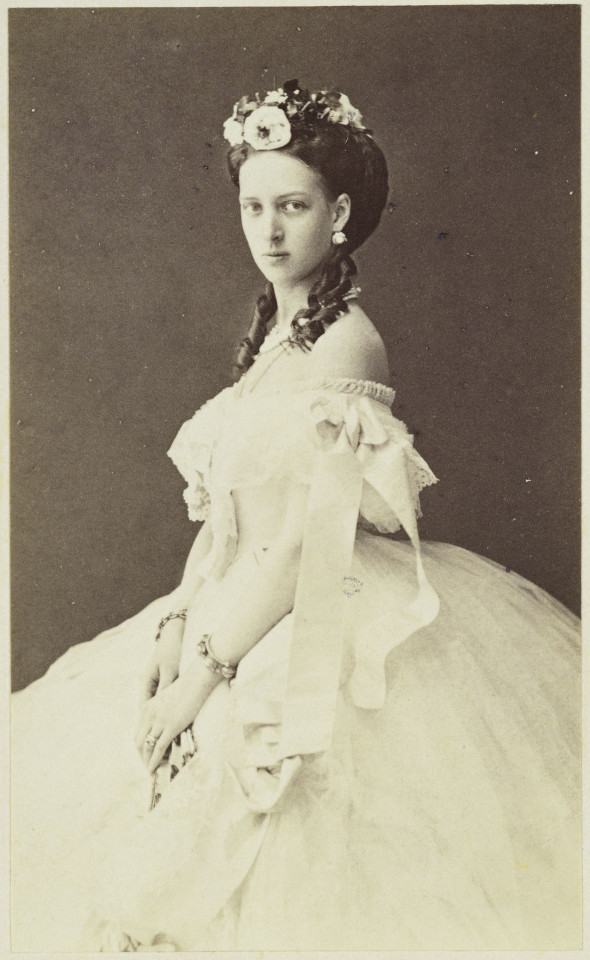
3. Princess Viktoria of Prussia

4. Princess Beatrice of Great Britain

5. Grand Duchess Xenia Alexandrovna of Russia

6. Duchess Mathilde Ludovika aka “Spatz” in Bavaria

7. Princesses Margarita, Theodora, Cecilie, and Sophie of Greece and Denmark
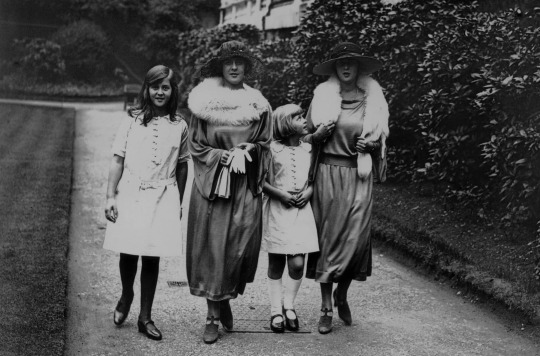
Feel free to ask me this question again because i have a lot more people in mind lol!
Thank you for asking!!!
#answered ask#princess charlotte of prussia#queen alexandra of the united kingdom#xenia alexandrovna#princess beatrice#Duchess Mathilde ludovika in Bavaria#princess margarita of greece and denmark#princess theodora of greece and denmark#princess cecilie of greece and denmark#cecilie of hesse#princess sophie of greece and denmark
9 notes
·
View notes
Photo
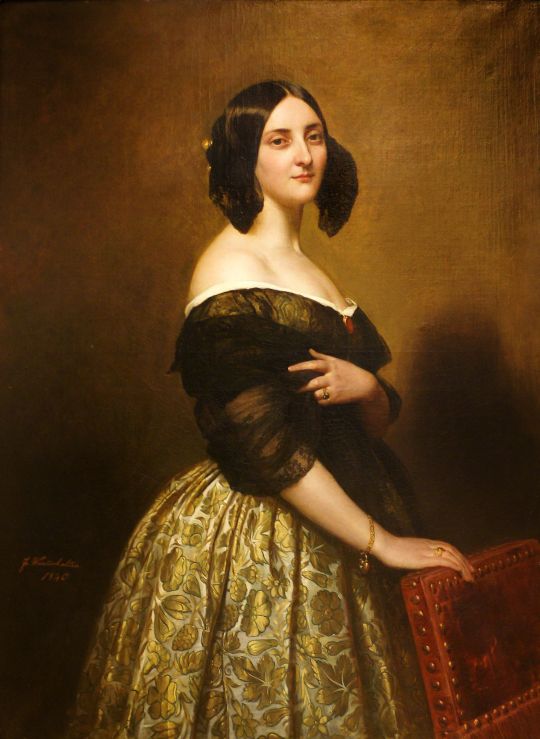



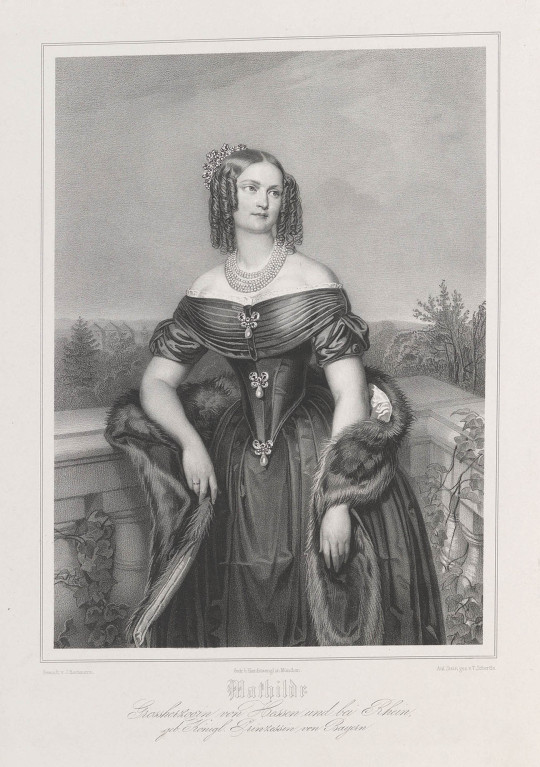
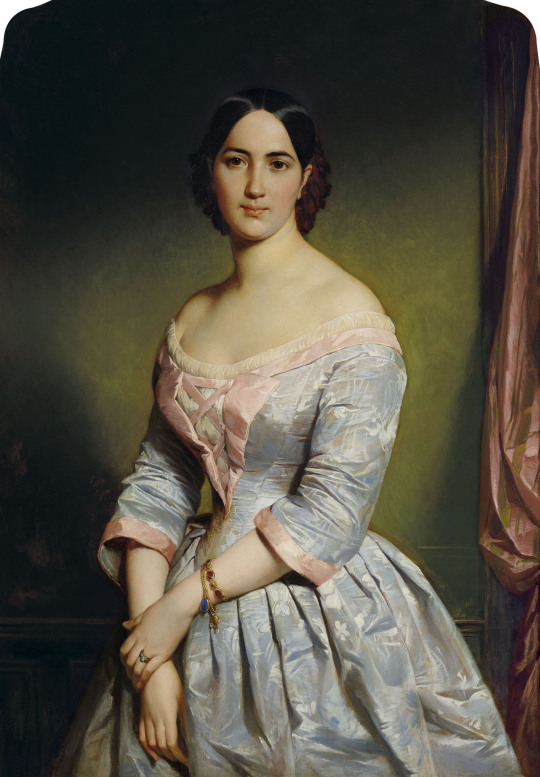
1840s dresses (from top to bottom) -
1840 Marie-Thécle de Monttessuy, Comtessede Nieuwerkerke by Franz Xaver Winterhalter (Landesmuseum Mainz - Mainz, Rheinland-Pfalz, Germany) 2069X2830.
1842 Christine Dieckhoff by Georg Wittemann (location ?). From pinterest.com/pin/366550857185910796/ 878X1200. Coral and also gold jewelry were fashionable.
Grand Duchess Maria Mikhailovna of Russia by ?. From tumblr.com/imperial-russia; fixed tear and some spots w Pshop 1553X2048.
1847 Grand Duchess Alexandra Iosifovna of Russia (née Princess of Saxe-Altenburg) by Hau (location ?). From tumblr.com/roehenstart 943X1220.
ca.1848-1860 Mathilde Caroline of Bavaria, Grand Duchess of Hesse and by Rhine lithograph by Valentin Schertle after Joseph Hartmann (Royal Collection). From Wikimedia 1296X1840.
1849 Anne-Arsene Charton by Édouard-Louis Dubufe (auctioned by Christie's). From Wikimedia; fixed spots & flaws w Pshop 2136X3072.
#1840s fashion#early Victorian fashion#Biedermeier fashion#Romantic era fashion#Louis-Philippe fashion#Marie-Thécle de Monttessuy#Franz Xaver Winterhalter#sheer wrap#Christine Dieckhoff#Georg Wittemann#side braid coiffure#coral jewelry#gold jewelry#chemise#Grand Duchess Maria Mikhailovna#pleated bertha#darts#Grand Duchess Alexandra Iosifovna#contrasting bertha#Mathilde Caroline of Bavaria#Valentin Schertle#Joseph Hartmann#Anne-Arsene Charton#Édouard-Louis Dubufe#lapels#laced bodice
12 notes
·
View notes
Photo
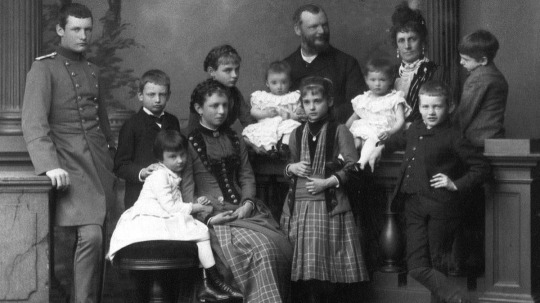
Ludwig III of Bavaria with his family, 1885
#Ludwig III of Bavaria#Maria Theresia of Austria-Este#Rupprecht Crown Prince of Bavaria#Princess Adelgunde of Bavaria#Maria Ludwiga Princess of Bavaria#Princess Mathilde of Bavaria#Prince Wolfgang of Bavaria#Prince Franz of Bavaria#Prince Karl of Bavaria#Princess Hildegard of Bavaria#Princess Wiltrud of Bavaria#1880s#wittelsbach#bavarian royal family
10 notes
·
View notes
Photo

0 notes
Text


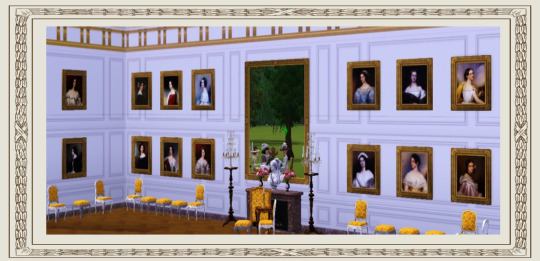
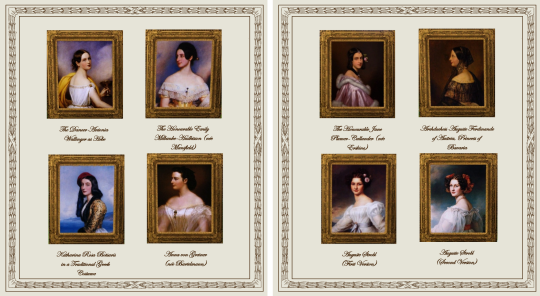


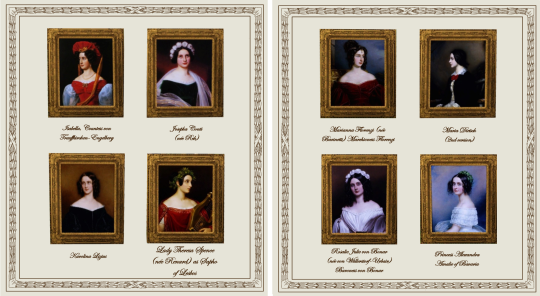
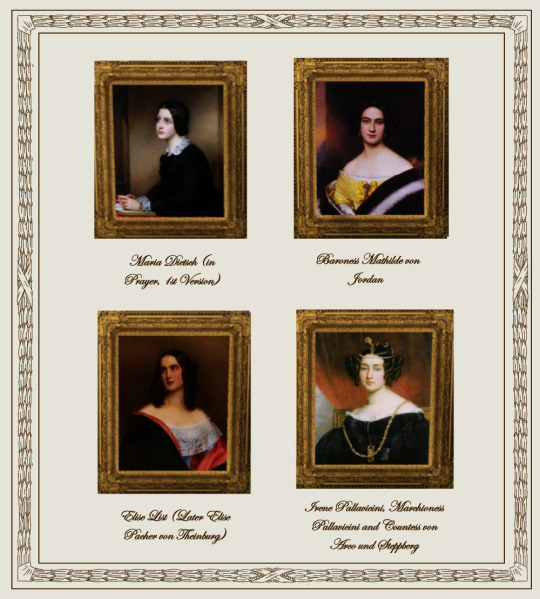

King Ludwig Ist's Gallery of Beauties.
A retexture by La Comtesse Zouboff — Original Mesh by @thejim07
The Gallery of Beauties (Schönheitengalerie) is a collection of 38 small portraits of the most beautiful women from the nobility and middle classes of Munich, Germany painted between 1827 and 1850 (mostly by Karl Joseph Stieler, appointed court painter in 1820) and gathered by Ludwig I of Bavaria in the south pavilion of Nymphenburg Palace in Munich. Two additional ones were created by Friedrick Drück and one portrait was stolen in the XXth century and remains missing.
The set includes all the 38 portraits, with the original frame swatches, fully recolorable. The portraits are of:
Friederike von Gumppenberg (later Baroness von Gumppenberg).
Amalia von Schintling.
Amalie Maximilianovna von Krüdener (née von Lerchenfeld) Baroness von Krüdener.
Anna Hillmayer.
Anna von Greiner (née Bartelmann)
Antonietta Cornelia Vetterlein.
Archduchess Auguste Ferdinande of Austria, Princess of Bavaria.
Auguste Strobl (first version).
Auguste Strobl (second version).
Baroness Mathilde von Jordan.
Carlotta von Boos zu Waldeck (née von Breidbach-Bürresheim) Baroness von Breidbach-Bürresheim.
Caroline Maximiliana Maria von Holnstein (née von Spiering) Countess von Holnstein aus Bayern
Elise List (later Elise Pacher von Theinburg
Eliza Rosanna James (née Gilbert), Known ss Lola Montez.
Helene Kreszenz Sedlmayr.
Irene Pallavicini, Marchioness Pallavicini and Countess von Arco un Steppberg.
Isabella, Countess von Traufkirchen-Engelberg.
Jane Elizabeth Digby, Later Baroness von Venningen.
Josepha Conti (née Reh).
Karolina Lizius.
Katharina Rosa Botsaris in a Traditional Greek Costume.
Lady Theresa Spence (née Renard) as Sapho of Lesbos.
Maria Dietsch (In prayer, first version).
Maria Dietsch (second version).
Marianna Florenzi (née Bacinetti) Marchioness Florenzi.
Marie Friederike Franziska Hedwig of Prussia, Crown Princess of Bavaria.
Maximiliane Borzaga.
Nanette von Kaulla.
Princess Alexandra Amalie of Bavaria.
Caroline von Oettingen-Wallerstein (later Countess von Waldbott-Bassenheim.
Regina Daxenberger.
Rosalie Julie von Bonar (née von Wüllerstorf-Urbair) Baroness von Bonar.
Sophie Friederike Dorothea Wilhemine, Archduchess of Austria (née Princess of Bavaria).
The Actress Charlotte von Hagn-Schwab as Thekla in Schiller's "Wallenstein".
The Actress Friederica Katharina "Willhemine" Sulzer.
The Dancer Antonia Wallinger as Hebe.
The Honourable Emily Mikbanke-Huskisson (née Mansfield)
The Honourable Jane Plumer-Callander (née Erskine)
Found under decor > paintings for 540§
Retextured from the "Portrait of Balsasarre Castiglione" found here
-------------------------------------------------------
CC shown here:
Wall paneling, mirror, girandole and floor by @thejim07
Fireplace by @hydrangeachainsaw
Chairs, stools, flower vases, bust, table, fireplace screen and candelabra by @joojconverts
Torchere by @martassimsbookcc
(Btw excuse my sims' reflection having tea)

Drive
(Sims3Pack | Package)
(Useful tags below)
@joojconverts @ts3history @ts3historicalccfinds @deniisu-sims @katsujiiccfinds
-------------------------------------------------------
#the sims 3#ts3#sims 3 cc#portrait#s3cc#sims 3#sims 3 download#sims 3 decor#joseph karl stieler#Munich#germany#nymphenburg#wall decor
85 notes
·
View notes
Text
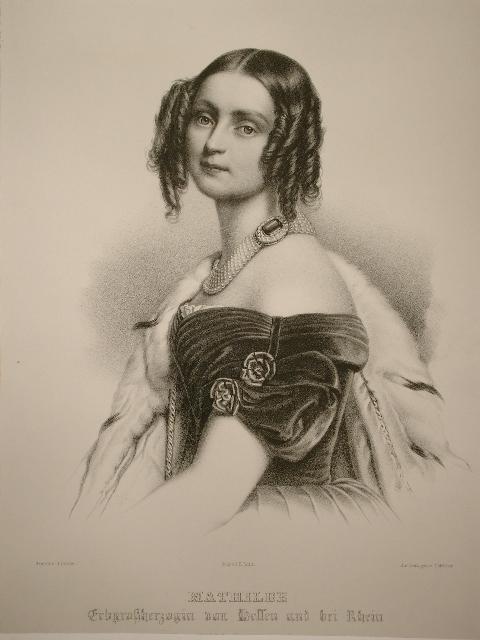
Princess Mathilde of Bavaria, Grand Duchess of Hesse
43 notes
·
View notes
Text
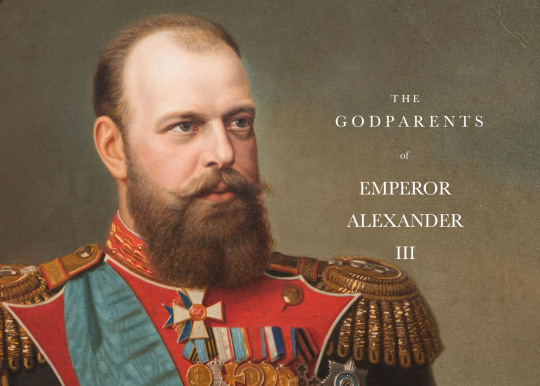

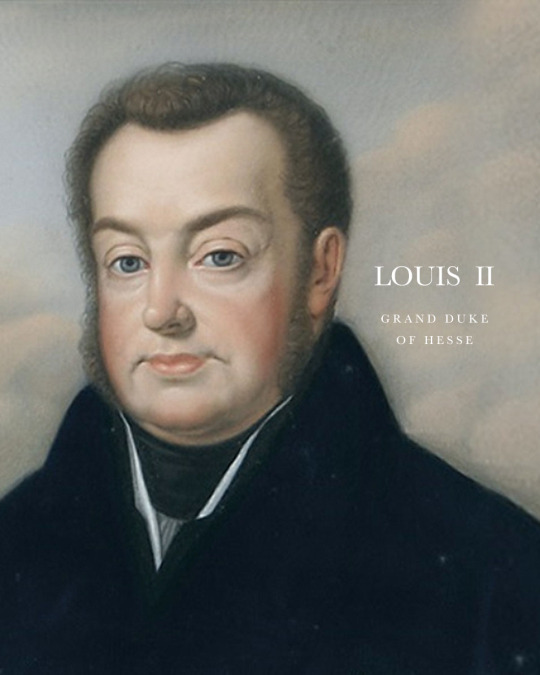

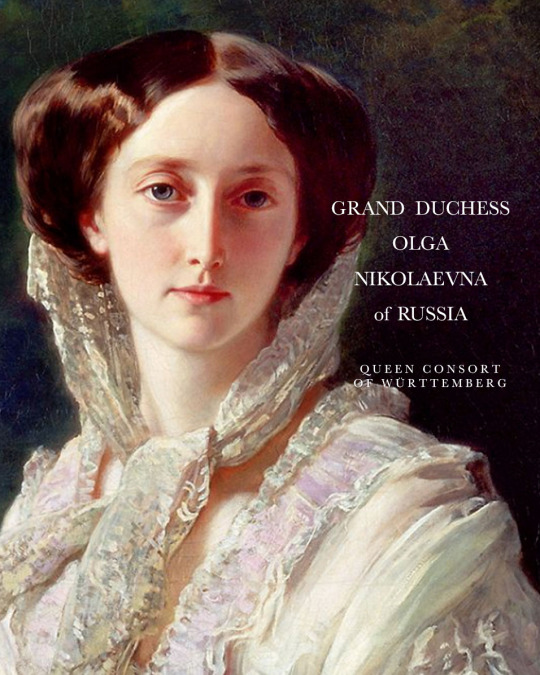
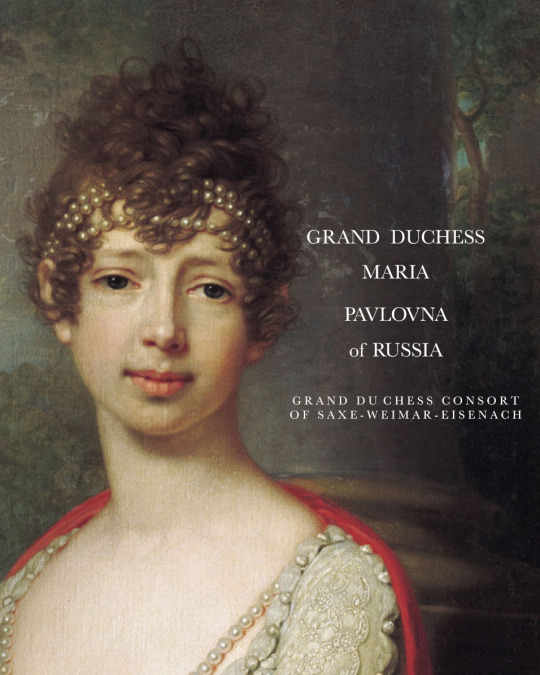

GODPARENTS OF EMPEROR ALEXANDER III
Emperor Alexander III (then Grand Duke) was born as the second son of Emperor Alexander II (then Tsesarevich) on 10 March 1845, during the reign of his grandfather Emperor Nicholas I. He was christened a week later at 10 am in the Winter Palace Church, St. Petersburg, by the Confessor of Their Imperial Highnesses. He had six listed godparents:
NICHOLAS I, EMPEROR OF RUSSIA - his paternal grandfather was one of his godparents present at his christening. Mainly remembered in history as a reactionary whose controversial reign was marked by geographical expansion, centralisation of administrative policies and repression of dissent. He died in 1855, when the Alexander was only 9 years-old, just a week shy from his 10th birthday.
LOUIS II, GRAND DUKE OF HESSE AND BY RHINE - his maternal grandfather was another of his godparents, but was absent at the christening. The hessian grand duke, like his paternal grandfather, was also considered a reactionary leader, he was in conflict with parliament almost his entire reign. The German revolution in 1848-49 proved his inability to govern. On March 5, 1848 he named his son Louis III as co-regent, and a year later he died.
GRAND DUCHESS ELENA PAVLOVNA OF RUSSIA - his great-aunt, the wife of Grand Duke Michael Pavlovich, stood as one of his godparents. Born as Princess Charlotte of Württemberg, she became a close friend of Alexander's mother the Empress Maria Alexandrovna, and was known as an intellectual. She was also considered the most exceptional woman in the imperial family since Catherine the Great.
GRAND DUCHESS OLGA NIKOLAEVNA OF RUSSIA, QUEEN CONSORT OF WÜRTTEMBERG - his aunt was one of his godparents present at the christening. She was the younger sister of his father. Attractive, cultured and intelligent, she was considered to be one of the most eligible princesses in Europe. Just three years after her nephew was born, in 1846, she married Crown Prince Karl of Württemberg. Alexander's older brother the heir apparent Nicholas died just two months before their aunt Queen consort of Württemberg. With his death, he became the next heir apparent, the 'Tsesarevich'.
GRAND DUCHESS MARIA PAVLOVNA OF RUSSIA, GRAND DUCHESS CONSORT OF SAXE-WEIMAR-EISENACH - his great-aunt was another of his godparents. One of the daughters of Emperor Paul I, the grand duchess married a German prince Karl Friedrich, Grand Duke of Saxe-Weimar-Eisenach in 1804. She was an intellect, interested in both arts and sciences. German poet and novelist Johann Wolfgang von Goethe hailed her as one of the worthiest women of his time. She was the great-grandmother of Wilhelm II, German Emperor and Queen Victoria of Sweden.
PRINCESS MATHILDE CAROLINE OF BAVARIA, GRAND DUCHESS OF HESSE AND BY RHINE - his aunt, the wife of his uncle Louis III, Grand Duke of Hesse and by Rhine, was listed as one of the future emperor's godparents. She was the eldest daughter of King Ludwig I of Bavaria. Her marriage to Louis III was childless. She died of cancer in 1862 at the age of 48.
Source
32 notes
·
View notes
Note
Who are all of the children of Maximilian in Bavaria and Ludovika in Bavaria? I only know Sisi
Hello! Sorry it took me so long, I’ve been putting together this answer for a while. This is a somewhat basic introduction to the siblings, since I didn’t want this post to be even longer than already is.
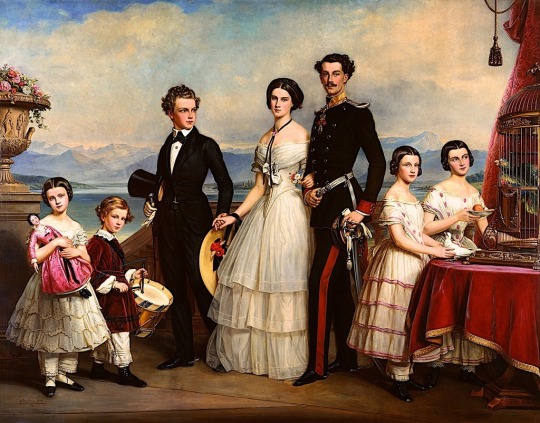
Duke Maximilian and Duchess Ludovika had a total of ten children, five girls and five boys. Their second son, Wilhelm Karl, sadly died at a month and half old, and their fourth son, Maximilian, was stillborn. The surviving eight children were (by order of birth): Ludwig Wilhelm, Helene, Elisabeth, Karl Theodor, Marie, Mathilde, Sophie and Maximilian Emanuel.

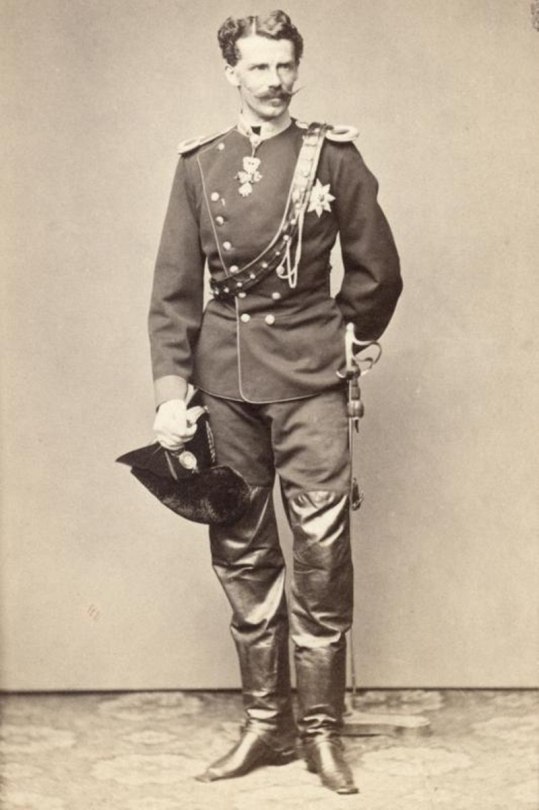
The eldest, Ludwig Wilhelm, born in 1831, was always known as “Louis” in his family. In 1858 he gave up his position as the future head of the Dukes in Bavaria branch in order to marry his mistress, former actress Henriette Mendel. He seems to have been somewhat difficult, at least judging by something Elisabeth told to her lady-in-waiting Countess Mária Festetics: “It is a good thing that Henriette is his wife, for anybody else would long since have left him, and he is happy with her.” What does this exactly mean I have no idea. Louis and Henriette had two children, Marie (born a year before her parents marriage) and Karl, who died as a baby. As was customary for Wittelsbach princes he did a military career, and in 1866 fought in the Seven Weeks War. We don’t really have much more information about him; many accounts about the Duke and his family that come after the Mayerling affair, in which his daughter Marie Larisch played a key role as the go-between Crown Prince Rudolf and Mary Vetsera, are heavily affected by the negative reputation that had befallen over her. His relationship with his sister wasn’t unaffected by this either, and he and Elisabeth became distant, though Elisabeth’s daughter Marie Valerie still wrote affectionately of her “Aunt Henriette”, so it may have been more out of a sense of awkwardness than Louis being directly blamed for the affair. He went to Elisabeth’s funeral, visibly affected by his sister’s death, and was one of the men who took her coffin to the Capuchin Crypt. A year after his wife’s death in 1891 he married actress Antonie Barth, forty years his junior. This marriage ended up in a divorce in 1913, after she had a child whom Louis claimed wasn’t his (I found some gossip articles about this on newspapers but that’s a whole rabbit hole I haven’t gone down yet). Ludwig Wilhelm died in Munich 1920, aged eighty-nine-years-old.
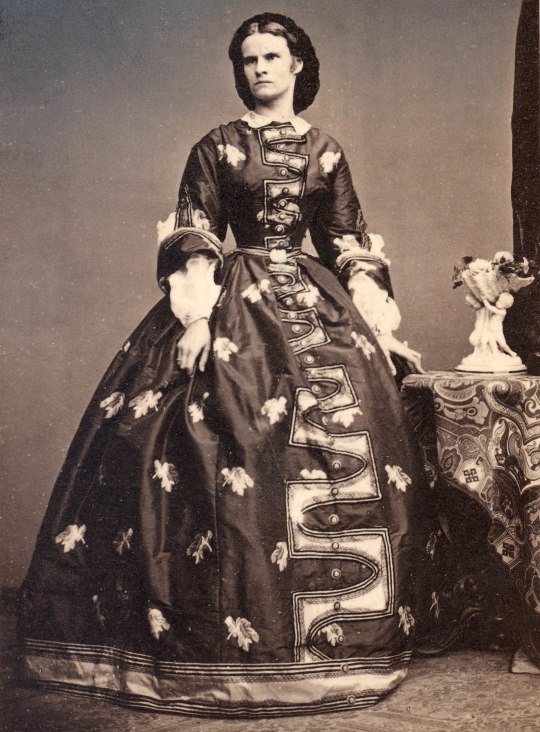

Born in 1834, the third child an eldest daughter, Helene, nicknamed “Nené” and “Lenza”, is probably the most known of Sisi’s siblings, and also the most misrepresented. She has gone down in history for being the disciplined, exemplary daughter that was groomed for years to become empress only to have “her fiancé” stolen by her younger sister. Except that none of this is true. In her old age Ludovika often complained that Helene had been a troublesome child who had caused her a lot of grievances. And it’s unlikely that Helene had ever expected, let alone been prepared, to become empress years in advance: not only there had been serious attempts to get Princess Anna of Prussia’s hand for Franz Josef in 1852 (why would they have done this if Helene was supposedly waiting in the wings to marry him?), but also when Ludovika was told that the emperor wanted to marry Sisi she became very emotional “for in her great modesty she had always doubted that the Emperor would really think in one of her daughters”.
By late 1857 Ludovika lamented that her daughter had pretty much become a spinster. But in the beginning of 1858 Helene met Maximilian, Hereditary Prince of Thurn und Taxis, and soon after he proposed. This marriage wasn’t well received by King Maximilian II, since the Taxis were subjects of the Bavarian king and therefore not equal to marry a Wittelsbach, but eventually King Max gave them the all-clear and they married. Reportedly the marriage was happy, but her husband sadly died only ten years later of an illness, and she fell into a deep grief. When Helene’s father-in-law died in 1871 she became the de facto head of the house of Thurn und Taxis until her son Maximilian reached the majority. Helene was sadly to suffer two more big blows in her life: in 1881 her daughter Elisabeth died of childbirth complications aged only 20-years-old, and in 1885 her son Maximilian died of cardiac problems aged only 24-years-old. Helene’s last years are said to have been very sad, since she never recovered from the untimely deaths of her husband and children. She died in 1890 at the age of 56, likely of cancer. At her deathbed were her two surviving children, Louise and Albert, and her sister Elisabeth.

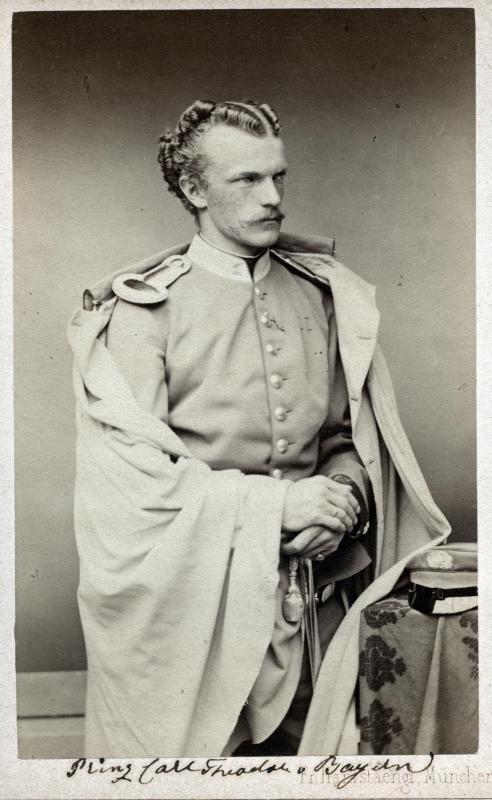
The fifth child and third son, Karl Theodor, called “Gackl” by his family, was Elisabeth’s favorite brother. He seems to have been a very charismatic man, since everyone that met him had nothing but good things to say about him. In 1865 he married his first cousin Princess Sophie of Saxony, and they had one daughter, Amalie. Sadly Sophie’s health was severely affected by childbirth, and died over a year later of influenza. Like his elder brother he also did a military career starting from a young age, and fougth in the Seven Weeks War. However, afterwards he left active service and went to the Ludwig Maximilian University of Munich, where he studied medicine. His studies were interrupted by the Franco-Prussian War, but he got his degree as a doctor in medicine, later specializing in ophtalmology. During this time Karl Theodor had remained a widower, but in 1874, seven years after his wife’s passing, he married Infanta Maria José of Portugal, daughter of the deposed King Miguel I of Portugal and seventeen years his junior. They had five children: Sophie, Elisabeth, Marie Gabrielle, Ludwig Wilhelm and Franz Josef. Gackl became a renowned oculist, and in 1895 he opened the Augenklinik Herzog Carl Theodor (Duke Carl Theodor Eye Clinic) in Munich, which exists to this day. He personally operated thousands of people, assisted by Maria José, and later also by his daughters. Karl Theodor died in 1909, a few weeks after his 70th birthday, from bronchitis.


While Helene is the most known of Elisabeth’s sister solely because everyone and their moms know the (incorrect) story of her being “rejected” by FJ, the sixth child and third daughter, Marie, is the most famous sister for her own merits. She was the last Queen of the Two Sicilies as the wife of King Francesco II, and has gone down in history for leading the resistance during the Siege of Gaeta, the last stand of the Bourbon dynasty in Naples. She was only nineteen when her husband finally surrounded, and lived in exile for the rest of her life. After ten years of marriage Marie and her husband had one child, Maria Cristina, who sadly passed away while still a baby. They tried to have more children, but all her pregnancies ended up in miscarriages. She spent the rest of her life traveling; when WWI broke she settled down in Munich, where she died aged 82 in 1925.
Marie has gotten an interesting reputation: she is either known for being the brave queen who stood up next to her troops until the end, or for being a haughty woman who deeply envied her imperial sister and lived full of resentment. The first is just one, although crucial, brief moment in her life; and the second is literally just what Mária Festetics, one of Elisabeth’s ladies-in-waiting, thought of her. Once I realized how little we actually knew about Marie, how much is just hearsay and speculation, she became fascinating to me, but sadly we still don’t have a good biography about her that uses primary sources instead of relying in gossipy second hand accounts.
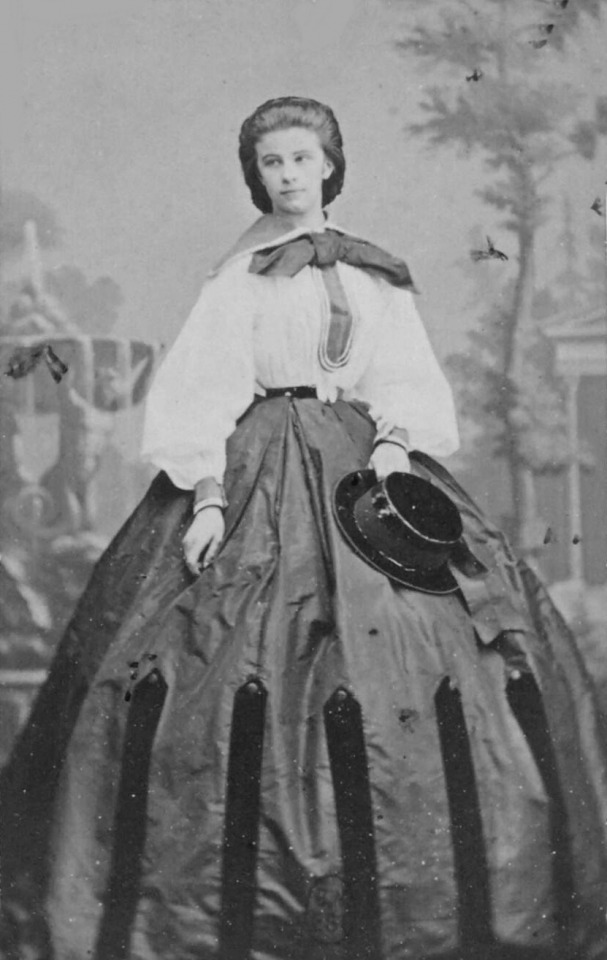

Mathilde, called “Spatz” (Sparrow), is the sister we have the least information of. She and Marie were the closest of the sisters; they were always together, and would often even dress the same (as you can see in the Stieler portrait). In 1861 Mathilde married Prince Luigi, Count of Trani, half-brother of Marie’s husband, and joined her sister in Rome, were the Bourbons in exile had settled their court. The marriage turned out to be unhappy, since her husband was an alcoholic and cheated on her, though they did had one child: Maria Teresa, called “Mädi”, born in 1867. Mathilde and Luigi separated eventually, though she did went to his aid and nurse him when he was sick. But the person she dedicated her life was her daughter, who for many years suffered from poor health (likely sclerosis); Mathilde took care of Mädi until her death, aged only 42. She spent the last years of her life with her sister Marie, and died only months after her, in 1925.


The youngest daughter, Sophie, born in 1847, is probably the most “romantic” of the Wittelsbach sisters. Just like Helene she has gone down in history for being a “rejected bride”, though in her case, it’s actually true. She was briefly engaged to her cousin Ludwig II of Bavaria, and it was an absolute disaster: he had no interest in marriage (not really that surprising when you consider that he was gay) and often publicly snubbed Sophie; she in turn was absolutely miserable because she felt he was playing with her. Ludwig kept postponing the wedding until Sophie’s father, Duke Max, send him an ultimatum, to which the king responded by just canceling it. As if these months hadn’t been stressful enough for Sophie, during this time she also had an affair with Edgar Hanfstaengl, the son of the court photographer. I don’t really know much about this liaison, only that she was aided by two ladies-in-waiting in order to meet him in private and that some love letters she wrote to him have survived. But whatever the extent of her feelings, the relationship could never become serious, and one year later she married Prince Ferdinand of Orléans, Duke of Alençon, a grandson of King Louis Philippe I of the French. I don’t know if this marriage was ever a love match or if Sophie simply wanted to settle down for good after all her failed romantic experiences; whatever the case they did have two children, Louise and Emmanuel. The Orléans had been living in exile in England since the deposition of Louis Philippe, and only after the fall of the Second French Empire in 1872 were they allowed to return to France. This probably improved Sophie’s mood, since she had suffered from depression since her children’s birth, and the English weather didn’t make her feel better.
After the death of her former fiancé Ludwig II in 1886, Sophie fell ill and on advice of her brother Gackl she searched for a treatment in Munich under a Dr Glaser. But while he treated her she fell in love with her doctor, who was also married with children. This time Sophie didn’t want to give up her enamored, and did something unthinkable for a woman of her status in the 19th century: she sought for a divorce from Ferdinand. Sadly things didn’t work out for her, because her husband, on the advice of her brother Karl Theodor, retaliated by having Sophie interned in a mental clinic for “moral insanity”, where she suffered the appalling “treatments” for mental illnesses of the time. After seven months she was considered cured, and allowed to leave the institution. She never again tried to divorce.
Sophie dedicated the last years of her life to charity work. In 1897 she was one of the organizers of the Bazar de la Charité, an annual charity event held in Paris since 1885, and was in the place when an accident set it on fire, taking the lives of 126 victims. She was one of the victims of the fire, and although she had the chance to leave she refused she refused to abandon the Bazar until everyone else was out, guiding and helping people to find the exist until her last moments. She had been fifty-years-old.


Lastly the youngest child Maximilian Emanuel, nicknamed “Mapperl”, is the brother we know the least about. Born in 1849, he was only two years and a half younger than his sister Sophie, whom he was the closest to: they were often referred as “die Kleinen” (the little ones). As his eldest brothers he did a military career, and fought both in the Seven Weeks War (aged only sixteen!) and in the Franco-Prussian War. At Sophie’s wedding he met and fell for a cousin of the groom, Princess Amalie of Saxe-Coburg and Gotha, which would have been great… if she hadn’t been already engaged to Prince Leopold of Bavaria. Here’s when things get a bit messy: according Briggitte Hamann, Elisabeth found out about the situation and decided to step in and free Mapperl’s beloved… by introducing her daughter Gisela to Leopold. Which is. Hmmm. A questionable thing to do. However, other authors claim that Elisabeth actually had nothing to do with that, specially considering that Mapperl’s wedding took place three years after Leopold and Gisela got engaged - if the goal was to make Amalie available, he definitely took his sweet time to make his move. One day I’ll look deep into it because I’m genuinely curious as to which is the truth; whatever the case, both couples had happy marriages, so good for them. Max Emanuel and Amalie had three sons: Siegfried, Christoph and Luitpold. Sadly Max Emanuel died quite unexpectedly in 1893 from an ulcer, aged only 43-years-old.
Again, this is only an introduction to the siblings, there’s far more information out there that I could possibly put in a single post. Thank you for your question! The Dukes and Duchesses in Bavaria are really interesting an I think they deserve the spotlight as much as their imperial sister.
#a lot of this i wrote from memory + copying my own previous posts + checking dates and names on wikipedia#so please forgive my lack of sources and sorry if there are mistakes!#house of wittelsbach#duke ludwig wilhelm in bavaria#helene in bavaria hereditary princess of thurn und taxis#karl theodor duke in bavaria#queen marie sophie of the two sicilies#mathilde in bavaria countess of trani#sophie in bavaria duchesse d'aleçon#duke maximilian emanuel in bavaria#asks
19 notes
·
View notes
Text

Duchess Marie Gabrielle Mathilde Isabelle Therese Antoinette Sabine of Bavaria with her children (two of them died in childhood):
Prince Luitpold Maximilian Ludwig Karl of Bavaria
Prince Albrecht Luitpold Ferdinand Michael of Bavaria
Prince Rudolf Friedrich Rupprecht of Bavaria
German vintage postcard
#marie#childhood#historic#albrecht luitpold#children#photo#two#briefkaart#vintage#maximilian#prince#rupprecht#ferdinand#ludwig#gabrielle#friedrich#sepia#albrecht#photography#rudolf friedrich rupprecht#therese#carte postale#ferdinand michael#postcard#postkarte#maximilian ludwig karl#postal#tarjeta#isabelle#karl
22 notes
·
View notes
Text
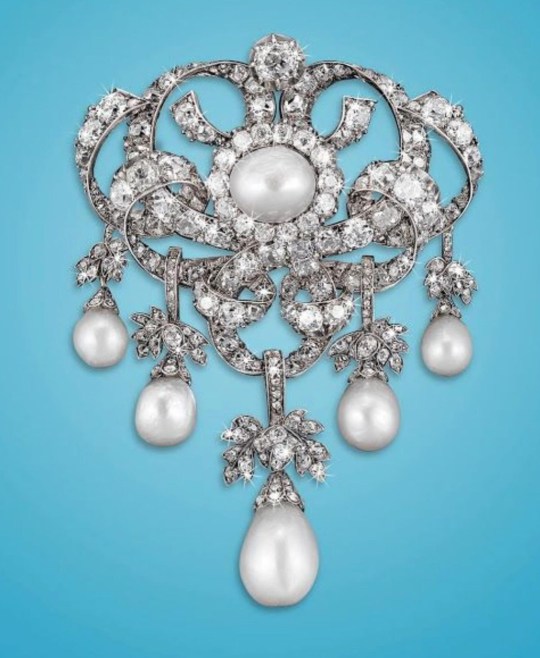
~ "An antique diamond and pearl devant de corsage owned by Archduchess Marie Valerie of Austria, 1890s
Archduchess Marie Valerie Mathilde Amalie of Austria was the youngest child of Emperor Franz Joseph I and Empress Elisabeth of Austria.
1890, Valerie married her third cousin Archduke Franz Salvator. They had met in 1886 at a ball, but Valerie waited several years to be sure that her feelings toward Franz Salvator were strong enough for a successful marriage. It was hoped by many at court that she would marry someone like the Crown Prince of Saxony, the Prince Royal of Portugalor Prince Alfons of Bavaria as she courted with him. Nonetheless, Empress Elisabeth declared that Valerie would be allowed to marry even a chimney sweep if she so desired (in contrast to her other children, who both had to make dynastic marriages). Valerie chose Franz Salvator, a relatively minor prince from the Tuscan branch of the Austrian imperial family who had no great wealth to offer, and Elisabeth, as promised, supported her favorite daughter.
It was a happy marriage and they had ten children." ~
2 notes
·
View notes
Note
were there any royals who interested in art such as painting, poetry, or anything that i can find on internet? if there were, what's your favorite?
Off the top of my head;
Queen Alexandra - she had numerous hobbies, including photography, painting, writing, and making collages. She'd combine her talents to make collages, prints, and paintings to give away to friends and family as presents. She used to take photos and render them, and then paint backgrounds and stamp them on with crafts. You can find her work here, just type her name and add the 'as a creator' filter.
Empress Maria Feodorovna - just like her sister Alix, she too inherited her painting talent from her mother Louise. Her paintings are truly stunning, I dare say she was the most talented in the family. Here's an article listing various Romanovs and their works.
Grand Duchess Adelheid-Marie of Luxembourg - like a true Hesse-Kassel [her mother and Queen Louise of Denmark were sisters, thus making her Alix and Dagmar's first cousin], she was remarkable at painting. Her talent was encouraged at an early age by her parents, and she took lessons from different renowned painters throughout her life.
Prince Philip - according to Telegraph he painted in oils, capturing landscapes and interiors on his travels, including at least one self-portrait at an easel and a candid painting of the Queen at breakfast. Another post about it.
Queen Frederica of Greece - I've never come across any of her actual paintings, but there exist photos of her painting in Corfu.
Princess Mathilde of Bavaria - after her death, her family anonymously published a collection of her poems titled Life-Dreams: The Story of a Blighted Life.
Princess Louise, Duchess of Argyll - she was the most artistically talented of Victoria's children and was a prolific artist and sculptor. You can find her work here and here.
I don't particularly have a favourite, I think they're all wonderful. ☺️
26 notes
·
View notes